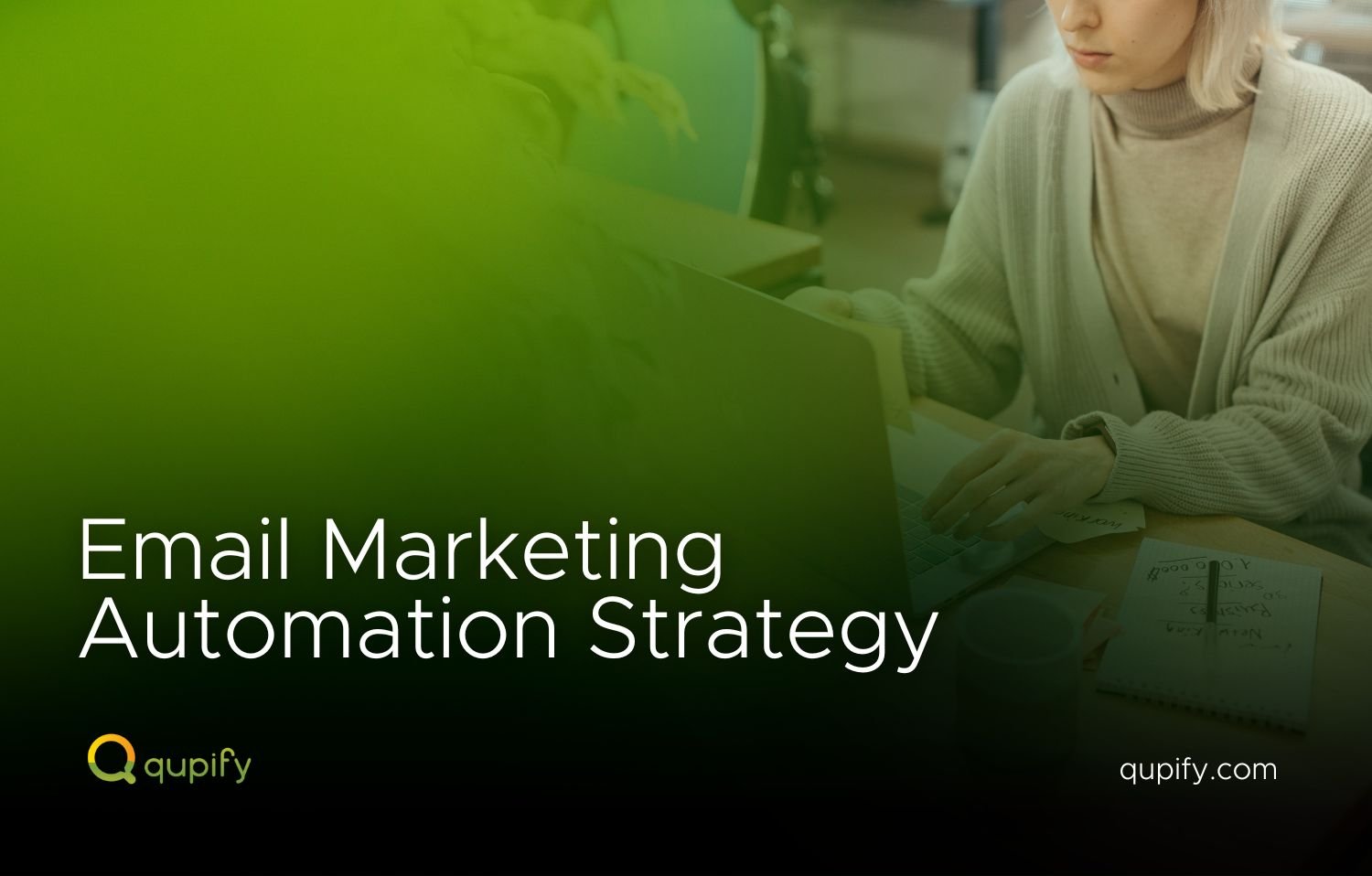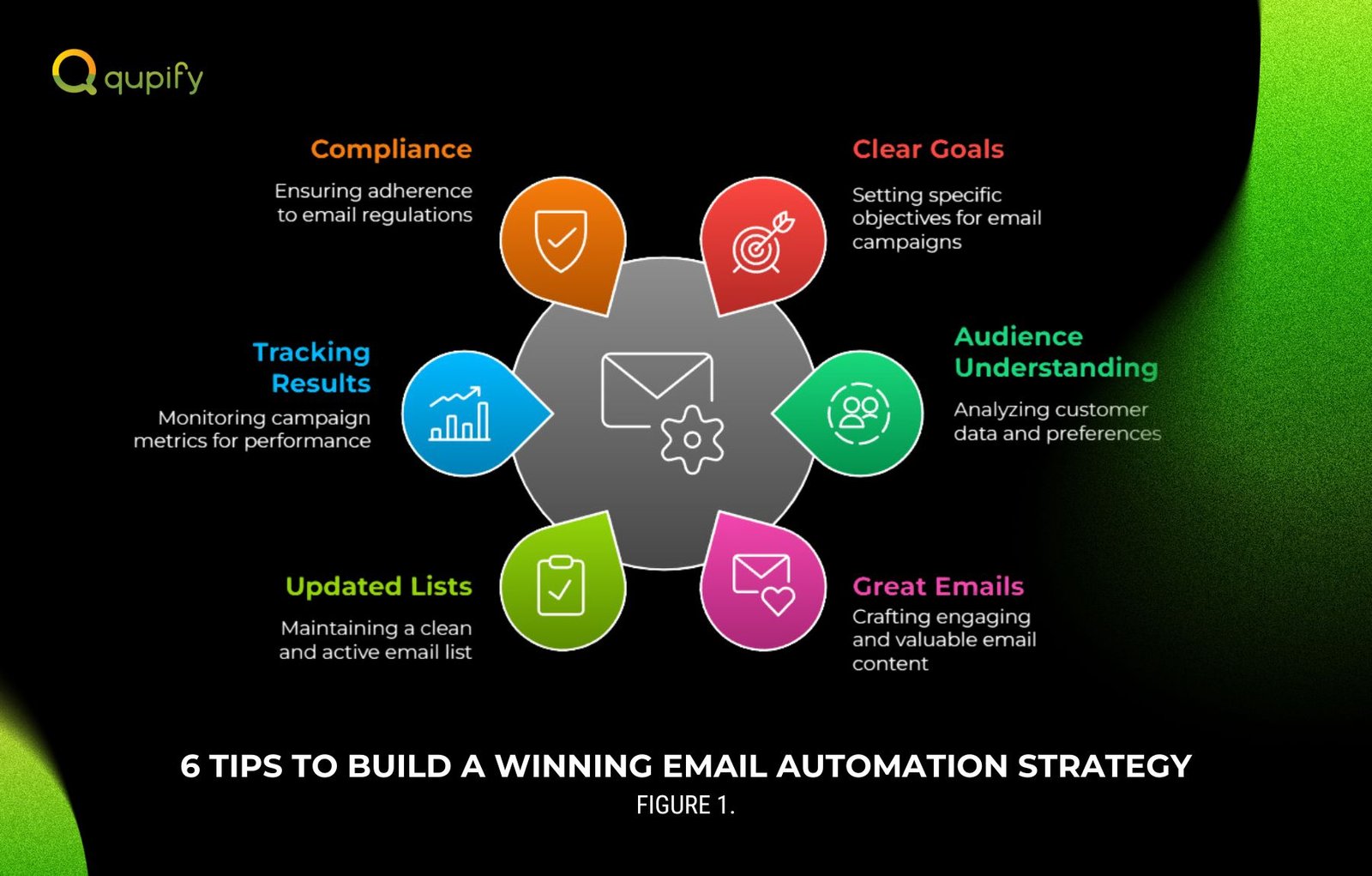Email Marketing Automation Strategy: A Comprehensive Guide
Highlights
- Email marketing automation allows you to create personalized emails using customer data for relevant and engaging communication.
- Automating workflows helps manage large email lists efficiently while saving time and maintaining consistency.
- Triggering emails based on customer actions ensures timely and effective engagement with your audience.
Automation has completely changed the game for marketing, especially email marketing. Did you know that email generates $42 for every $1 spent?
It’s now one of the best ways to reach potential customers effectively. With email automation, businesses can send messages that feel personalized and timely without needing to spend hours crafting each one.
The magic lies in delivering the right message at the perfect time to keep people engaged and interested in what you offer.
But how do you make sure your emails stand out in crowded inboxes?
In this article, we’ll break down the basics of email marketing automation, explain why it’s essential, and share strategies, tools, and tips to help you succeed.

What is Email Marketing Automation?
Email marketing automation involves using software to send emails automatically based on triggers, actions, or predefined schedules. Unlike manual email campaigns, automation ensures that your messages are targeted, consistent, and timely.
For instance, you can send a welcome email as soon as someone subscribes or a reminder when they abandon their cart.
This method saves time, boosts engagement, and ensures no opportunity is missed to connect with your audience.
Automation also provides valuable insights through analytics, helping you measure success and refine your strategy.
Whether you’re trying to nurture leads, retain customers, or drive sales, email marketing automation offers a scalable and effective solution.
If you want to read more email marketing automation resources such as email signature generators and templates, click here.
Smart Strategies for Email Marketing Automation
Divide Your Email List
Segmentation is one of the most important steps in email marketing. By dividing your email list into smaller groups based on factors like demographics, interests, or purchase history, you can create messages that feel relevant and personal.
For example, you might send special promotions to loyal customers while targeting new subscribers with introductory offers.
Segmentation also ensures that your emails resonate with specific audiences, increasing open rates and engagement.
Make It Personal
Personalization goes beyond simply adding a recipient’s name to an email. Use data like browsing history, purchase behavior, or past interactions to tailor your content.
For instance, instead of saying, “Check out our latest products,” try, “Hi Alex, we thought you’d love these summer picks!”
Personalized emails feel more human, making recipients more likely to engage.
Adding dynamic elements, such as recommending products or services based on their preferences, can further boost your email’s impact.
Plan Emails for Every Stage
Your email campaigns should align with the customer journey. Start with a friendly welcome email to introduce new subscribers to your brand and set expectations.
For shoppers who didn’t complete a purchase, send a cart abandonment email with a reminder or incentive to return.
After a sale, follow up with a thank-you email or suggest complementary products. Re-engagement emails are great for reconnecting with subscribers who haven’t interacted in a while.
Having planned emails for different stages keeps your audience engaged and nurtures long-term relationships.
Send Emails Based on Actions
Behavioral triggers allow you to send emails at the perfect moment, based on specific actions taken by your audience.
For instance, if someone signs up for your newsletter, an automatic welcome email can be triggered.
Similarly, if a customer clicks on a particular product but doesn’t purchase it, you can follow up with more information or a special discount.
Action-based emails feel timely and relevant, which increases the likelihood of engagement and conversion.
Test and Improve
Testing is essential for discovering what resonates with your audience. Use A/B testing to compare subject lines, email designs, or CTAs to determine what works best.
Pay attention to key metrics like open rates, click-through rates, and conversions to measure success.
Testing isn’t just a one-time process—it’s an ongoing effort to refine your strategy based on real data. Regularly updating and optimizing your campaigns ensures you stay effective and relevant.
Connect with Other Platforms
Email marketing becomes even more powerful when integrated with other platforms. For instance, you can connect your email campaigns with social media ads for a seamless experience across channels.
Syncing with CRM tools like Salesforce or Zoho ensures you have access to comprehensive customer data for better targeting. You can also integrate with e-commerce platforms to automate personalized product recommendations.
By connecting email with other platforms, you create a unified strategy that amplifies your marketing efforts.
6 Tips to Build a Winning Email Automation Strategy

- Set Clear Goals. Decide what you want to achieve, such as increasing sales, nurturing leads, or retaining customers. Clear goals help you focus your efforts and measure your success effectively.
- Understand Your Audience. Analyze customer data, preferences, and behaviors to understand what they want. Use these insights to craft messages that resonate and feel relevant to your audience.
- Write Great Emails. Keep your emails simple, engaging, and focused on delivering value. Use strong calls-to-action (CTAs) to guide recipients toward taking the desired action.
- Keep Your List Updated. Remove inactive or invalid email addresses to maintain a healthy and responsive email list. A clean list improves deliverability and ensures you’re reaching the right people.
- Track Results and Adjust. Monitor metrics like open rates, click-through rates, and conversions to evaluate your campaign’s performance. Use this data to tweak your strategy and improve future campaigns.
- Follow the Rules. Ensure your emails comply with regulations like GDPR and CAN-SPAM by including unsubscribe links and avoiding spam-like language. Following the rules builds trust and keeps your campaigns ethical.
Final Thoughts
Email marketing automation is a powerful way to connect with your audience, save time, and drive results. By segmenting your audience, personalizing your emails, and planning campaigns around the customer journey, you can create messages that truly resonate.
Use tools and strategies to streamline your efforts, and don’t forget to analyze and optimize along the way.
With the right approach, email automation can help your business grow while keeping your audience engaged and excited about your brand.



